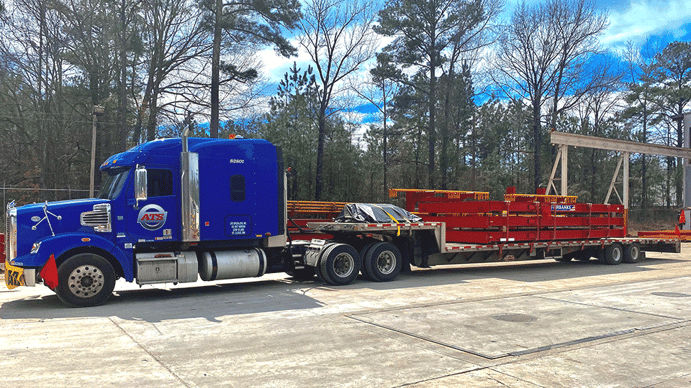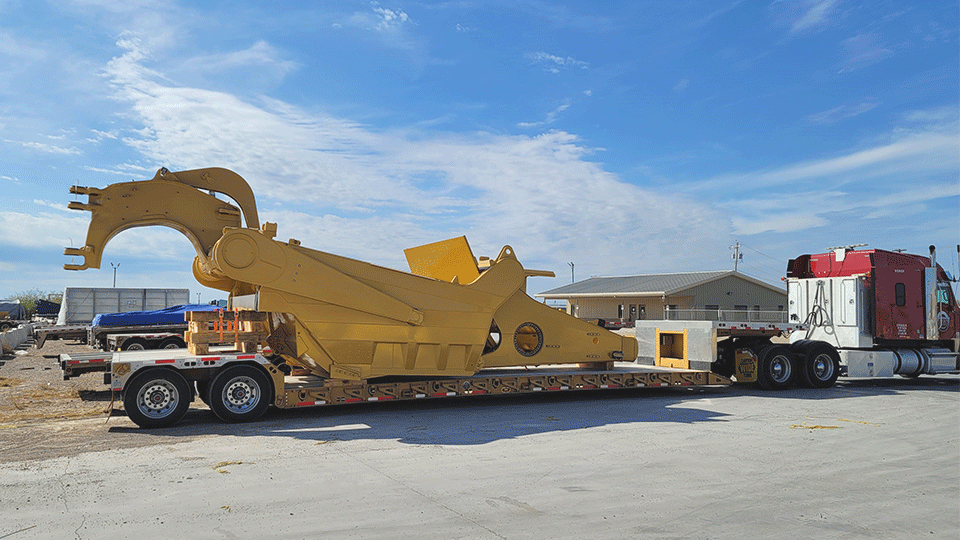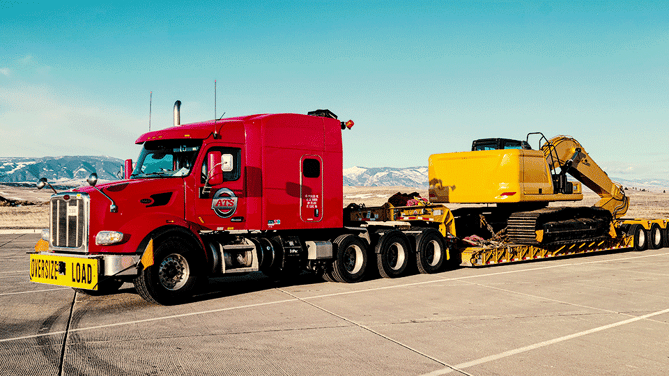The rules and regulations that govern the transportation industry are in place for a reason; to keep transportation professionals and the motoring public safe.
Some shipments, like the palletized goods hauled by dry vans, for example, make this (relatively) easy — boasting little variance from one load to the next.
On the other hand, open-deck freight shipments ask a bit more of shippers, carriers, consignees and lawmakers. Without properly loading, measuring and securing them, these shipments pose an imminent risk to all parties involved in, or adjacent to, their transit.
Understanding “divisible” and “non-divisible” load regulations — the point at which a shipment is considered divisible and when it’s not — is crucial to safely and legally executing your next freight move. So, what do you really need to know?
Here at Anderson Trucking Service (ATS), our experience in the transportation industry (an industry we’ve been in since 1955) has taught us many things, including the ins and outs of divisible vs. non-divisible load classification.
In this article, we’ll pass this knowledge onto you by answering the questions of:
What is a Divisible Load?
Divisible loads are multi-piece freight shipments that have been loaded in a way that increases one, or more, of the overall loaded dimensions (height, width, weight or length) beyond legally allowed thresholds. When deemed necessary and possible, taking off the pieces that raise a load to oversized or overweight status and “dividing” it is non-negotiable.

Here are the dimensional thresholds at which a load deemed “divisible” must be separated:
Width: Two, or more, pieces cannot be loaded side by side and exceed 8 feet, 6 inches wide. If there are multiple pieces that together account for an overall width of greater than 8 feet, 6 inches the one causing excess must be removed.
Length: Two, or more, pieces of freight can’t be loaded end to end and exceed “legal” length. The thresholds for “legal” length vary by state with some allowing up to 4 feet of overhang and others allowing none. That said, should your shipment’s overall length, when loaded end to end, exceed the legal limits of its route, the piece causing the overhang must be removed.
Related Content: Can I Overhang Freight on a Flatbed Trailer?
Height: Multiple pieces of freight cannot be stacked on top of each other and exceed “legal” height restrictions. Like legal length, the total height you’re allowed will change by state. Some offer 13 feet, 6 inches, some allow 14 feet and others will give you 14 feet, 6 inches. However, should your stacked load exceed legal limits, the pieces contributing to any extra height will need to be taken off.
Weight: More than one piece cannot be loaded onto a trailer and exceed legal gross vehicle weights or axle weight per grouping. While legal axle weights will change based on your location, any cargo that pushes total weights beyond these limits must be removed if deemed possible.
Related: What Are The Legal Axle Weight Limits For Commercial Trucks?
Note: divisible loads are only classified as “divisible” for permitting reasons when two, or more, pieces of cargo are together creating an oversized dimension.
For example, if you have one piece of freight that exceeds legal height, loaded on a lowboy trailer and another of legal dimensions loaded on the same trailer, as long it is legal length, width, and weight this shipment would be considered divisible, but permitting isn't necessary.
Since only one of the pieces is creating the height — and removing the legal piece wouldn’t reduce this overall height — you’re not required to separate them. Instead, all you’ll need to do in this instance is acquire a permit for the overall height of your shipment. The same applies to multi-piece shipments where one item is too wide.

What Are Divisible Load Permits?
Like many other aspects of transportation, some States offer exceptions to the divisible load laws in place. These exceptions are typically based on the freight movement patterns throughout their state and can fluctuate based on the time of year.
In these instances, when exceptions are made — such is the case for the side-by-side transportation of haybales in some states during certain parts of the year — it’s possible for companies to acquire divisible load permits.
Divisible load permits, like non-divisible permits, are only good for a set period of time and can be purchased at the discretion of the shipper, covering them up to a certain size/weight. That said, divisible load permits only apply to freight that’s transported specifically within that State. As such, you shouldn’t expect to permit a divisible load for interstate transport.
What is a Non-Divisible Load?
Non-divisible loads are freight shipments that exceed the legal loaded dimensions of the states, counties and municipalities they travel through but are legally deemed “non-divisible” in nature. Companies moving non-divisible goods must attain permits for each of their oversized qualities, which can be done directly through each jurisdiction.
 According to definitions outlined by the Federal Highway Administration (FHWA), “non-divisible" is defined as any load or vehicle exceeding applicable length or weight limits which, if separated into smaller loads or vehicles, would:
According to definitions outlined by the Federal Highway Administration (FHWA), “non-divisible" is defined as any load or vehicle exceeding applicable length or weight limits which, if separated into smaller loads or vehicles, would:
- Compromise the intended use of the vehicle, i.e., make it unable to perform the function for which it was intended;
- Destroy the value of the load or vehicle, i.e., make it unusable for its intended purpose; or
- Require more than 8 work hours to dismantle using appropriate equipment. The applicant for a non-divisible load permit has the burden to dismantle the load.”
Although in many cases these definitions are self-explanatory and leave little doubt as to whether a load classifies as “non-divisible” this isn’t always the case. Should you have questions about your individual situation, it’s crucial that you contact a trusted transportation company to ensure all necessary permits are acquired in accordance with your timelines.
Need Oversized Permits? Here’s How To Get Them.
Now that you have an understanding of what’s considered a divisible vs. a non-divisible load, you understand the important role oversized permits play in the transportation of non-divisible commodities.
That said, the process of attaining proper permits — which often need to be acquired at multiple levels (State, County, Township, etc.) — can be intimidating. And, when it comes to successfully facilitating your supply chain, coming through on your commitments and sticking to your budget, confusion is the last thing you need.
Don’t worry, we’ve got you covered here as well.
Check out our article on How to Get Oversized Permits For Your Freight (3 Easy Steps) for a comprehensive overview of this topic. When legally necessary, getting permits for your freight is non-negotiable. But that doesn’t mean this needs to set you back or hinder your performance.
As such, if you have questions about how ATS can help you get this process right, or whether your next load qualifies as “divisible” or “non-divisible” contact us today.
We’re more than happy to answer any questions you may have.

